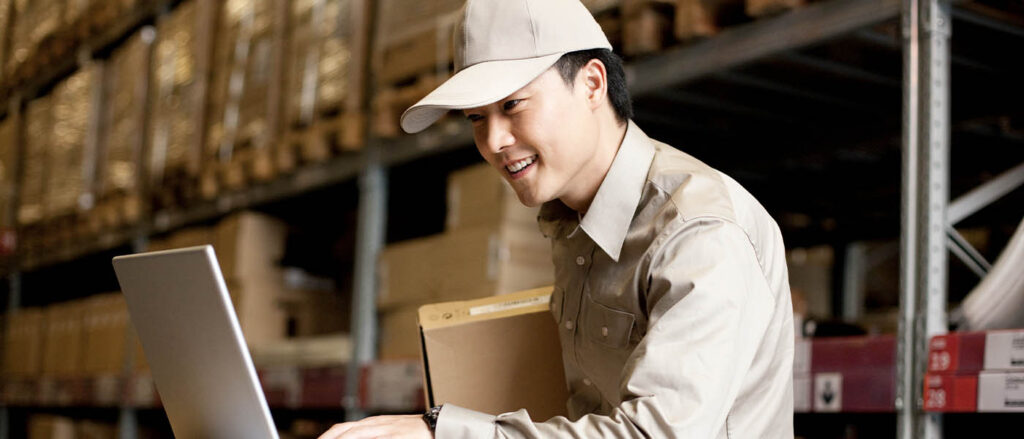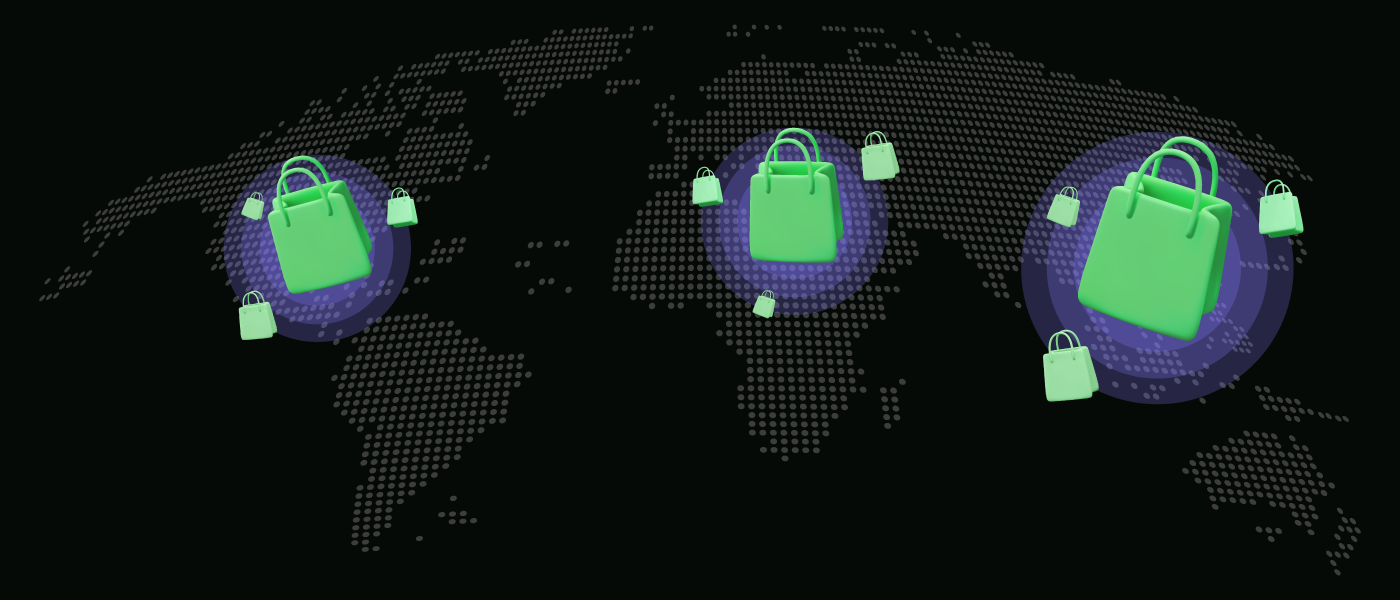Whether you’re just starting off with your E-Commerce venture, are an established entrepreneur, or working at an Enterprise level, you rely on data to keep your supply chain running smoothly. You need to understand what is, or isn’t selling, how the prices of materials are fluctuating and how that impacts you, and manage your inventory across multiple channels, warehouses, fulfillment centers. And you want all of this in real-time, and consolidated in one place. This is where a supply chain Control Tower comes in handy.
This is the critical tool that can be the difference between success and watching your E-Commerce dreams fall helplessly to the wayside.
What Is A Supply Chain Control Tower?

Think of this as software that is the dashboard for the smooth operation of your supply chain, inventory management, and fulfillment. It helps you to extend the view of your operation for planning and execution purposes, so you know what’s happening with your E-Commerce supply chain with a quick view.
Of course, the actual definition of a control tower can differ based on the industry and what part of the supply chain you’re actually looking at. As well, in some cases, the term “control” tower is a misnomer. Each version of them comes with its own set of capabilities, and most of them can show you what’s going on and what corrective actions are needed (if any), but most users will need to log in elsewhere to implement them. This means the value that the software provides is only as useful, informative, and timely if you have the capabilities to implement corrections easily.
The right software should help you manage your data better – whether it’s stock turn, monitoring deadstock, managing inventory levels – all across multiple platforms and shopping networks. All this data is available in one place so that you can improve the flow of your products through your supply chain to manage fulfillment, distribution, and other levels of service that your company provides. The more comprehensive your software, the better you can improve your processes, reduce costs, improve accuracy, and ensure on-time/in-full (OTIF) delivery.
That said, there are a lot of different iterations of this software out there, and it can be challenging for a company to weed through the clutter of multiple software solutions. Hence, we’ve developed a quick guide to simplify your search.
Supply Chain Towers Vs Supply Chain Dashboards
| Supply Chain Towers | Supply Chain Dashboards |
| Vertical integration approach, consolidating various functions within a centralized structure. | Data visualization tools providing real-time insights and analytics on supply chain operations. |
| Focuses on end-to-end supply chain visibility, collaboration, and optimization. | Emphasizes data analysis, performance tracking, and decision-making based on key performance indicators (KPIs). |
| Facilitates seamless communication and coordination among different supply chain partners. | Enables users to monitor and manage critical supply chain metrics and identify areas for improvement. |
| Offers comprehensive visibility into inventory levels, order status, production schedules, and logistics movements. | Provides interactive and customizable dashboards with visual representations of data, including charts, graphs, and reports. |
| Supports strategic planning, risk management, and overall supply chain efficiency. | Enhances data-driven decision-making, agility, and responsiveness in supply chain operations. |
| Enables efficient resource allocation, cost reduction, and optimization of supply chain processes. | Aids in identifying bottlenecks, performance gaps, and opportunities for process optimization. |
| Requires integration of various systems and processes to create a unified supply chain management platform. | Relies on data integration from multiple sources to provide a holistic view of supply chain performance. |
Visibility or Control?

Your control tower is much like an air traffic control tower at an airport – offering a central hub for leveraging data to improve visibility. While it is incredibly useful to have all the disparate pieces of information at hand, broken down by line of business, product, warehouse, etc… but much like in an airport, you can see the data, but you can’t do anything with it from your tower. Just like air traffic control can’t land or divert the planes themselves, despite all the data they have.
A more appropriate software tool would be a supply chain control tower that allows for users to take actions within the system itself – integrating data from all systems and allowing you to deal with situations in real-time. You want something that allows you to execute quickly and decisively to ensure a smooth fulfillment operation.
How To Build A Supply Chain Control Tower
Building a supply chain control tower requires careful planning and integration of processes and systems. Here are the key steps to consider:
1. Define Objectives
Clearly outline the goals and objectives of your supply chain control tower, such as enhancing visibility, improving collaboration, and optimizing operational efficiency.
2. Identify Key Stakeholders
Determine the relevant internal and external stakeholders involved in your supply chain, including suppliers, logistics providers, and customers. Establish effective communication channels and collaborative relationships.
3. Data Integration
Integrate data from various sources such as ERP systems, transportation management systems, and warehouse management systems. Implement data standardization and ensure data accuracy and reliability.
4. Technology Infrastructure
Invest in a robust technology infrastructure that can handle data integration, analytics, and real-time visibility. Consider implementing a cloud-based platform for scalability and flexibility.
5. Data Analytics
Utilize advanced analytics tools to gain insights from the integrated data. Apply predictive and prescriptive analytics to identify patterns, optimize inventory levels, and improve decision-making.
6. Performance Monitoring
Establish key performance indicators (KPIs) to monitor the performance of your supply chain. Use dashboards and visualizations to track KPIs in real-time, enabling proactive decision-making.
7. Collaboration and Communication
Implement collaboration tools and platforms to facilitate communication and information sharing among stakeholders. Encourage transparency and collaboration to resolve issues quickly.
8. Continuous Improvement
Regularly assess and refine your supply chain control tower by analyzing performance metrics and identifying areas for improvement. Embrace a culture of continuous improvement to drive efficiency and effectiveness.
Building a supply chain control tower is a complex process that requires strategic planning, technology integration, and collaboration. By leveraging the right tools, processes, and data, businesses can gain end-to-end visibility, optimize operations, and achieve supply chain excellence.
Experience fulfillment by Locad today!
A Single Source of Truth.
When it comes to running a successful fulfillment operation, it essentially takes a strong team of people and data points that can interact seamlessly. The best control tower software will ensure that your team is connected via a many-to-many or multi-party network. Essentially, this is making sure that you’re connected to a network that offers visibility both upstream and downstream, as well as the reverse, across all of your distribution and fulfillment channels. This will not only allow you to act quickly but also collaborate with all of your partners to ensure your flows are optimized.
This is the defining characteristic of a valuable supply chain control tower – connecting disparate systems to create a single source of truth that is scalable. Find a partner that can help you connect all of your systems quickly and efficiently as you evolve, as well as add new partners. As you grow, you want the software to grow with you. Real-time visibility into the consolidated cache of data is the difference between failure and success in the supply chain game.
Find the End-to-End Solution.
Not every control tower treats the supply chain the same way. Some don’t even span the entire end-to-end but are included as a part of a Transport Management Solution (TMS) as a value-add. While inbound and outbound logistics and transportation are useful when it comes to freight spend, track and trace functionality for your on-time delivery, it tends to silo your entire backend.
Beyond the transportation piece, lies the information regarding manufacturing, distribution centers, warehouses, and omnichannel fulfillment. To get the most out of your software, opt into software that gives you granular visibility into all of your key touchpoints and order flows. When there’s more opportunity to diversify the data you can pull in, it allows you to get into dynamic inventory sourcing across your network, to facilitate order splitting or consolidation so you’re pulling from one pool of inventory. This enables you to optimize each and every order.
The software can also help you innovate your approach to supply chain resilience and real-time risk management. This kind of data and actionable insights can help leaders see how their operation fits within the bigger supply chain landscape, and help implement strategic changes to offer some of the highest service levels, in spite of any economic, political, or environmental hiccups.
What Kinds of ROI Will a Digital Control Tower Deliver?
Obviously, the ROI metrics that you value as an organization will differ based on business size, need, and complexity. Moving towards a digital transformation isn’t an easy task, and there’s no one answer. But, it’s much needed, regardless of cost, scale, or time. Allowing your organization to automate and resolve repetitive tasks in a timely manner and cost-saving way pays for itself. There isn’t really a cookie-cutter approach to what that would look like from a return perspective, but any time and cost saved is a fantastic return, right off the bat.
That said, sometimes you need more than that. Companies that rely on large and complex operations can find value in implementing a Control Tower technology, to help orchestrate their entire supply chain ecosystem, from end-to-end. A robust software will offer a tremendous advantage when it comes to real-time decision making and problem-solving, across all vendors and distribution channels. This visibility and control are crucial for optimizing every cost detail along the way, and to find agility and flexibility in the face of any disruptions.
As mentioned above, there are some measurable and immeasurable benefits to introducing a Control Tower. According to a Nucleus Research report, by implementing this software a business can save 4-6% in manpower organization and 3-7% in operational costs due to centralizing and digitizing their supply chain. From there, businesses can see up to 5-10% savings in transportation and 3-5% in efficiency gained through inventory, warehousing, distribution, and supply chain optimization. But keep in mind that depending on the relative size and complexity of an organization, these numbers could be much higher.
Mastering the Art of Supply Chain Forecasting: Strategies, Methods, and Best Practices
Supply chain forecasting is a critical practice that enables organizations to predict and plan for future demand and supply patterns…
A Control Tower is The Key to Growth
An obvious benefit to the savings mentioned above is that you can put that money back into your business to scale. But relying on a Control Tower also has a secondary benefit that has little to do with logistics data, and more to do with customer satisfaction. In order for any business model to be successful, you need to cater to your customers and keep them loyal. A Control Tower can help with this by improving management and communications, as well as facilitating data mining and data integration. This creates an opportunity for companies to take a hard look at their performance and how it relates to customer experience and satisfaction.
There’s no shortage of issues that customers have with companies, including shipping delays, complicated returns processes, and lack of visibility into actual inventory numbers. By discovering what they want, and being able to anticipate their needs, you can go a long way in reshaping your business models. The single platform that is being offered by the Control software anticipates a customer’s wants and needs, as well as opens your company to a broader range of opportunities, helps improve convenience, and establishes what differentiates you from your competitors. Whether it’s how you produce, organize, or operate your supply chain, to how you pivot into a more strategic partner and customer-centric organization – the software can facilitate all that.
The LOCAD Control Tower
You spend a lot of time managing the many aspects of your E-Commerce business, and it can be draining. You’re single-handedly keeping an eye on the customer-facing side while managing stock levels and ensuring that your products get delivered on time. But, you don’t have to do it alone – we can help. LOCAD offers a supply chain platform as a service for multi-channel fulfillment, on-demand warehousing, and distribution. Our product is an easy-to-use technology platform to manage your infrastructure and help mitigate some of your greatest E-Commerce pain points.
At the center of that platform is our LOCAD Control Tower.
We work across all aspects of your business in order to assess and consolidate inventory so that you have access to everything in real-time; sales, inventory, and KPIs. We can help you flag non-moving stock, have oversight over the entire end-to-end supply journey, and put all of your crucial business and inventory data at hand. As well, we offer a robust on-demand fulfillment network, you can expand or reduce your business with seasonality, growth, or a restructuring of your key business. Whether you’re an E-Commerce seller, entrepreneur, or Enterprise level, you need a technology tool and fulfillment partner that can help you achieve your most profitable and effective business. Not only that, we’re here to help you with:
- Supply and Demand Planning.
- Flexible terms and variable fulfillment pricing with no lock-in commitments.
- Workflow Automation.
- A distributed fulfillment network to bring stock closer to consumers, shortening the last mile, and making delivery faster and more cost-efficient.
- Integration with the platform or marketplace of your choice.
- Contracted rates with many courier companies (saving you money).
Experience fulfillment by Locad today!
Frequently Asked Questions
What is the process of a supply chain control tower?
The process of a supply chain control tower involves integrating data from various systems, analyzing it for insights, monitoring key performance indicators, and making data-driven decisions to optimize supply chain operations.
What are the three essential capabilities of a supply chain control tower?
The three essential capabilities of a supply chain control tower are end-to-end visibility across the supply chain, real-time monitoring and analytics, and collaborative capabilities for effective communication and coordination among stakeholders.
What are the benefits of the control tower supply chain?
The benefits of a control tower in the supply chain include improved visibility and transparency, enhanced operational efficiency, reduced costs, better risk management, increased agility and responsiveness, and improved customer satisfaction through streamlined processes.
What are the objectives of the control tower?
The objectives of a control tower in the supply chain are to achieve end-to-end visibility, optimize inventory levels and logistics operations, enhance collaboration and communication among stakeholders, improve supply chain responsiveness, and enable data-driven decision-making.
What are the disadvantages of a control tower?
Some potential disadvantages of a control tower include the complexity and cost of implementing and maintaining the required technology infrastructure, the need for effective data integration and management, potential resistance to change from stakeholders, and the challenge of aligning different processes and systems across the supply chain.












